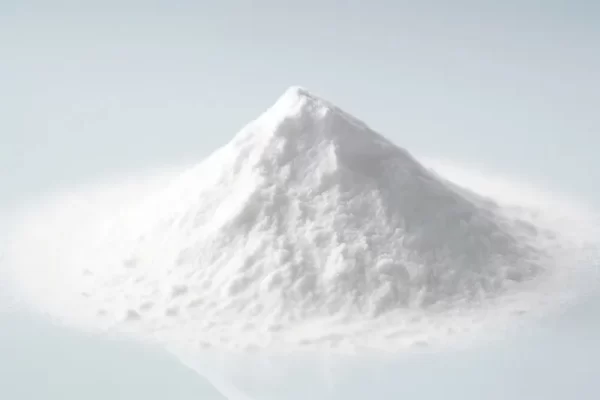
Calcium carbonate is an important and widely used inorganic salt mineral, commonly known as “industrial monosodium glutamate” and one of the commonly used fillers in various industries.
1. Main ingredients
Heavy calcium carbonate is mainly a powder material obtained by mechanical grinding and processing of natural minerals such as calcite, marble, limestone, chalk, and white marble as raw materials;
Light calcium carbonate is mainly a powder material obtained from limestone as raw material through processes such as calcination, digestion, carbonization, dehydration, drying, and classification.
2. Product packing density
The difference in product bulk density is the most obvious difference between heavy calcium carbonate and light calcium carbonate.
The bulk density of heavy calcium carbonate products is relatively large, generally 0.8~1.3g/cm3;
The bulk density of light calcium carbonate products is small, generally 0.5-0.7g/cm3, and the bulk density of some nano-calcium carbonate products can even reach about 0.28g/cm3.
3. Oil absorption value
Heavy calcium carbonate has a low oil absorption value due to its large particles, smooth surface, and small specific surface area, generally around 40-60mL/100g;
Light calcium carbonate has fine particles, rough surface, and large specific surface area, so its oil absorption value is high, generally around 60-90mL/100g.
4. Whiteness
Heavy calcium carbonate has relatively more impurities, so the product whiteness is generally 89% to 93%, and very few products can reach 95%;
Light calcium carbonate products have high purity, so the whiteness is generally 92% to 95%, and some products can reach 96% to 97%.
5. Moisture content
The moisture content of heavy calcium carbonate products is generally 0.2% to 0.3%. The moisture content is relatively low and relatively stable. The moisture content of some high-end products can even reach about 0.1%;
Ordinary light calcium carbonate products have a moisture content of 0.3% to 0.8%, which sometimes fluctuates and is unstable.
6. Powder characteristics
The characteristics of heavy calcium carbonate powder are: irregular particle shape, and the particles have certain edges and corners, and the surface is rough; the particle size difference is large, the particle size distribution is wide, and the particle size is large.
The characteristics of light calcium carbonate powder are: the particles have regular shape and can be regarded as monodisperse powder; the particle size distribution is narrow. According to the shape of the crystal grains, light calcium carbonate can be divided into spindle-shaped, cubic, needle-shaped, chain-shaped, spherical, flaky and rhombus-shaped.
7. Particle size
Spindle-shaped calcium carbonate is the most common crystal form among light calcium carbonates, with an average long-axis particle size of 5-12 μm and an average short-axis particle size of 1-3 μm;
The average particle size of needle-shaped calcium carbonate is 0.01-0.1μm, and the average aspect ratio is 5-100;
The average particle size of chain calcium carbonate is 0.01-0.1μm, and the average aspect ratio is 10-50;
The average particle size of spherical calcium carbonate is 0.03-0.05μm;
The average particle size of cubic calcium carbonate is 0.02-0.1μm;
The average particle size of flake calcium carbonate is 1-3μm.
The particle size of heavy calcium carbonate products ranges from 0.5 to 45 μm. According to its original average particle size (d), it is divided into: coarsely ground calcium carbonate (>3μm), finely ground calcium carbonate (1-3μm), and ultrafine calcium carbonate. (0.5-1μm);
8. Different application performance
Scope of application of calcium carbonate: plastic products, rubber, papermaking, EVA foaming, shoe materials, artificial leather, coatings, inks, building materials, wires and cables, handicrafts, adhesives, toothpaste and other industries.
During the application process, heavy calcium products are mainly used in industries such as papermaking, rubber and plastics. The filling amount is generally large and is mainly used as a volume filler to reduce the manufacturing cost of applied products. Light calcium products have a relatively wide range of applications, mainly for volume filling, while nano calcium carbonate products are often used as functional fillers such as modification or reinforcement during the application process, and the filling amount is generally small. The main application areas of light calcium carbonate products are plastics, rubber, coatings, adhesives and inks.
